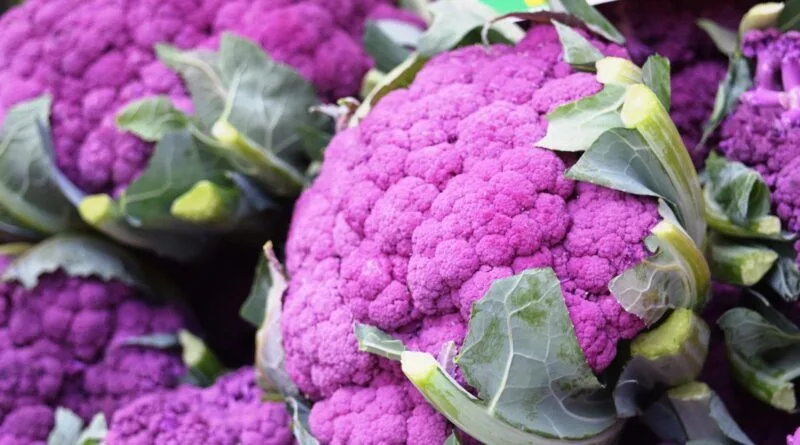When you think of cauliflower, you probably picture the classic white variety. But have you tried purple cauliflower? This vibrant veggie isn’t just visually striking—it’s also packed with unique health benefits and nutrients. Plus, if you’re a gardening enthusiast, you can even grow it from seeds!
In this post, we’ll explore:
✔ The health benefits of purple cauliflower
✔ What makes it different from white cauliflower
✔ How to grow purple cauliflower from seeds
Why Is Purple Cauliflower Purple?
Unlike white cauliflower, which lacks pigments, purple cauliflower gets its stunning hue from anthocyanins—the same antioxidants found in blueberries, red cabbage, and blackberries. These compounds are responsible for its deep purple color and come with powerful health perks.
Health Benefits of Purple Cauliflower
1. Rich in Antioxidants (Anthocyanins)
- Helps fight oxidative stress and inflammation.
- May reduce the risk of chronic diseases like heart disease and cancer.
2. High in Vitamin C
- Boosts immunity and skin health.
- One serving provides about 77% of the daily recommended intake of vitamin C.
3. Supports Brain Health
- Anthocyanins may improve cognitive function and protect against neurodegenerative diseases.
4. Good for Digestion
- High in fiber, which promotes gut health and prevents constipation.
5. Anti-Inflammatory Properties
- Helps reduce inflammation linked to arthritis and metabolic disorders.
6. Low in Calories, High in Nutrients
- A great low-calorie, nutrient-dense food for weight management.
Purple Cauliflower vs. White Cauliflower: What’s the Difference?
| Feature | Purple Cauliflower | White Cauliflower |
|---|---|---|
| Color | Deep purple (anthocyanins) | White (no pigments) |
| Antioxidants | Higher (due to anthocyanins) | Lower |
| Taste | Slightly nuttier, sweeter | Mild, neutral |
| Texture | Similar, but may stay firmer when cooked | Softer when cooked |
| Nutrition | More vitamin C and antioxidants | Still nutritious but fewer phytonutrients |
Best Ways to Eat It:
- Raw in salads or veggie platters (retains the most nutrients).
- Roasted with olive oil, garlic, and herbs.
- Steamed or stir-fried to preserve color and texture.
- Blended into soups or mashed as a colorful side dish.
Growing Purple Cauliflower from Seeds
If you love gardening, growing purple cauliflower from seeds can be a fun and rewarding project. Here’s how:
1. When to Plant
- Cool-weather crop – Best grown in spring or fall (avoid extreme heat).
- Start seeds indoors 6-8 weeks before the last frost.
2. Soil & Sun Requirements
- Well-draining, fertile soil (pH 6.0-7.0).
- Full sun (at least 6 hours of sunlight daily).
3. Planting & Care
- Sow seeds ¼ inch deep in seed trays.
- Transplant seedlings when they have 4-5 leaves, spacing them 18-24 inches apart.
- Water consistently (keep soil moist but not soggy).
- Fertilize with compost or a balanced organic fertilizer.
4. Harvesting
- Ready in 70-80 days from transplanting.
- Harvest when the head is firm and compact (about 6-8 inches in diameter).
- Cut the head with a sharp knife, leaving some leaves attached.
Pro Tip: To maintain the vibrant purple color, blanch the heads by tying outer leaves over the curd a few weeks before harvesting (protects from sun exposure).

Purple cauliflower is more than just a pretty vegetable—it’s a nutritional powerhouse with antioxidants, vitamins, and anti-inflammatory benefits. Whether you enjoy it roasted, raw, or steamed, it’s a delicious way to add color and nutrients to your meals.
And if you’re up for a gardening challenge, try growing it from seeds for a fresh, homegrown harvest!
Have you tried purple cauliflower? How do you like to prepare it?
Share your thoughts in the comments! 🌱💜

